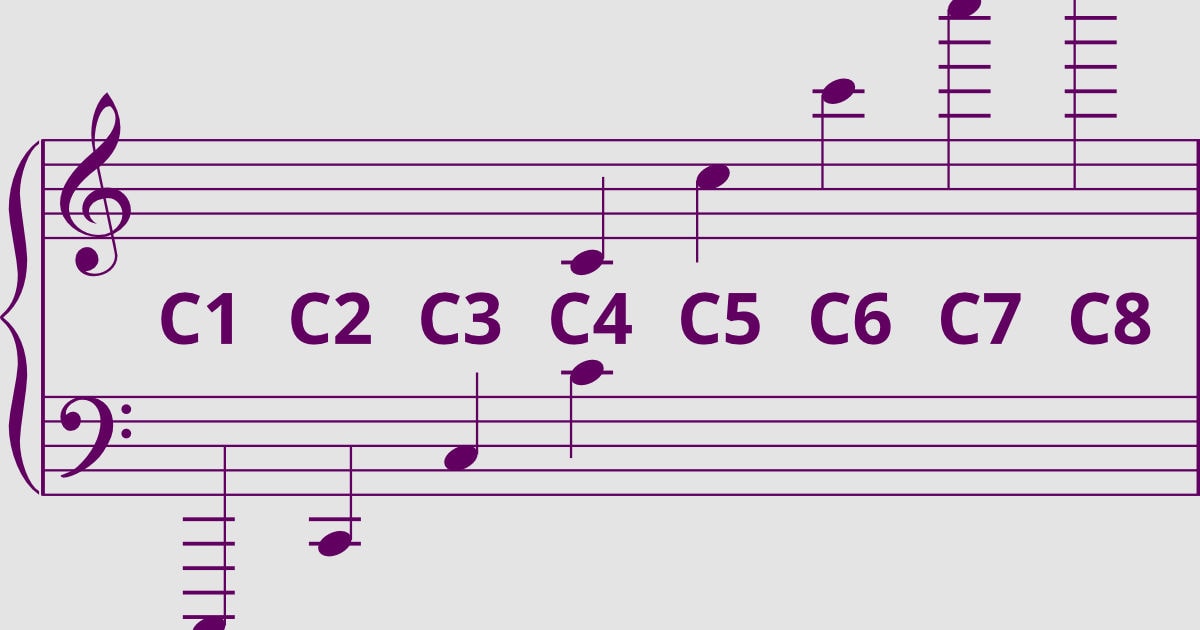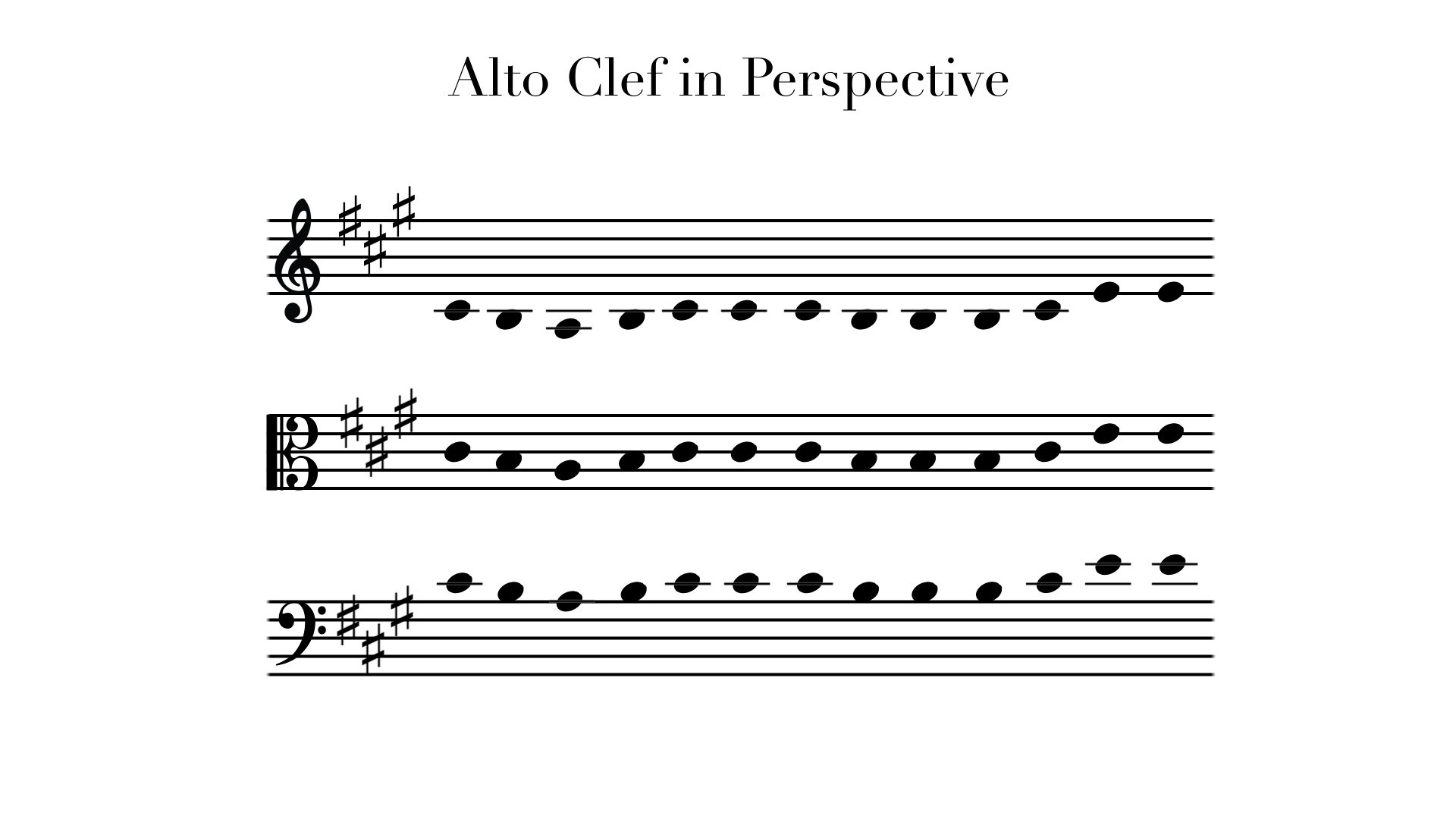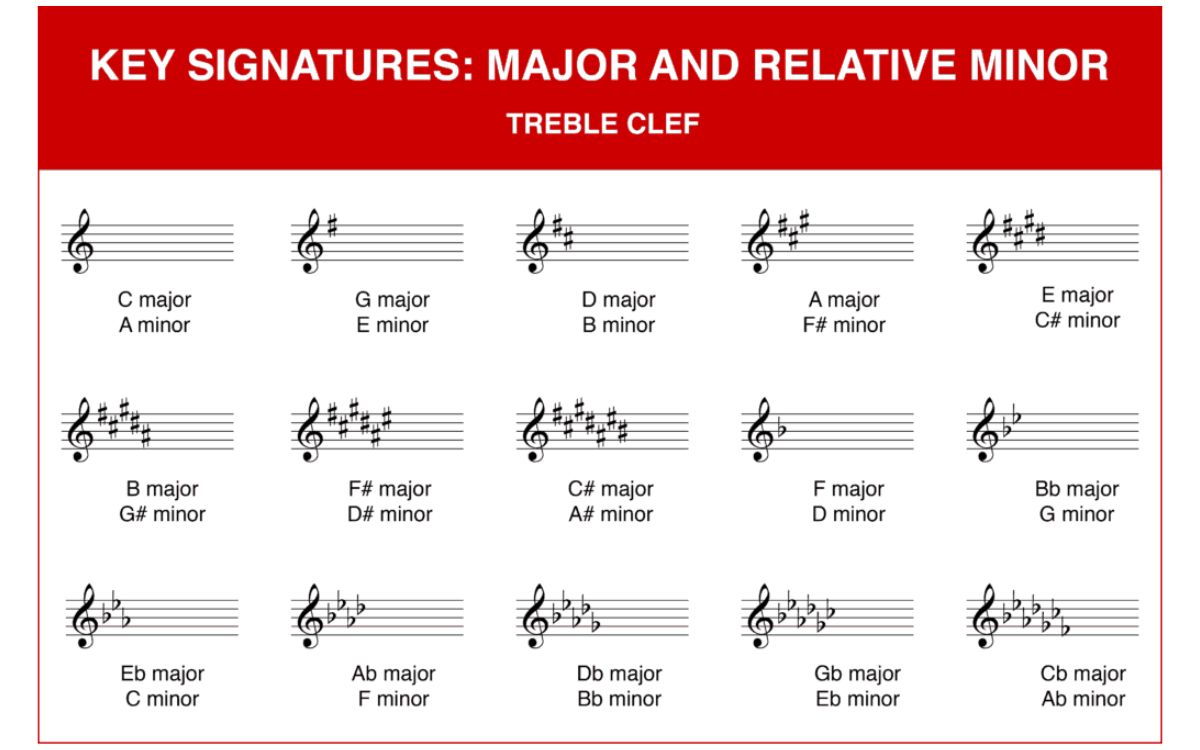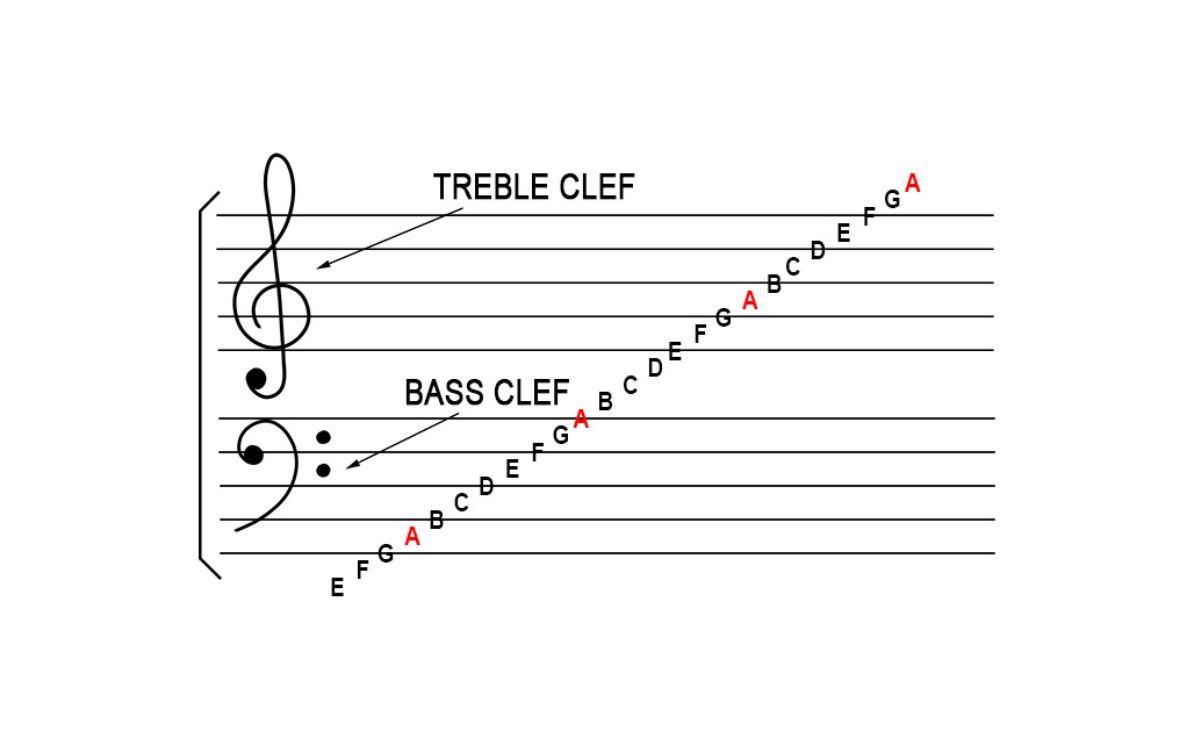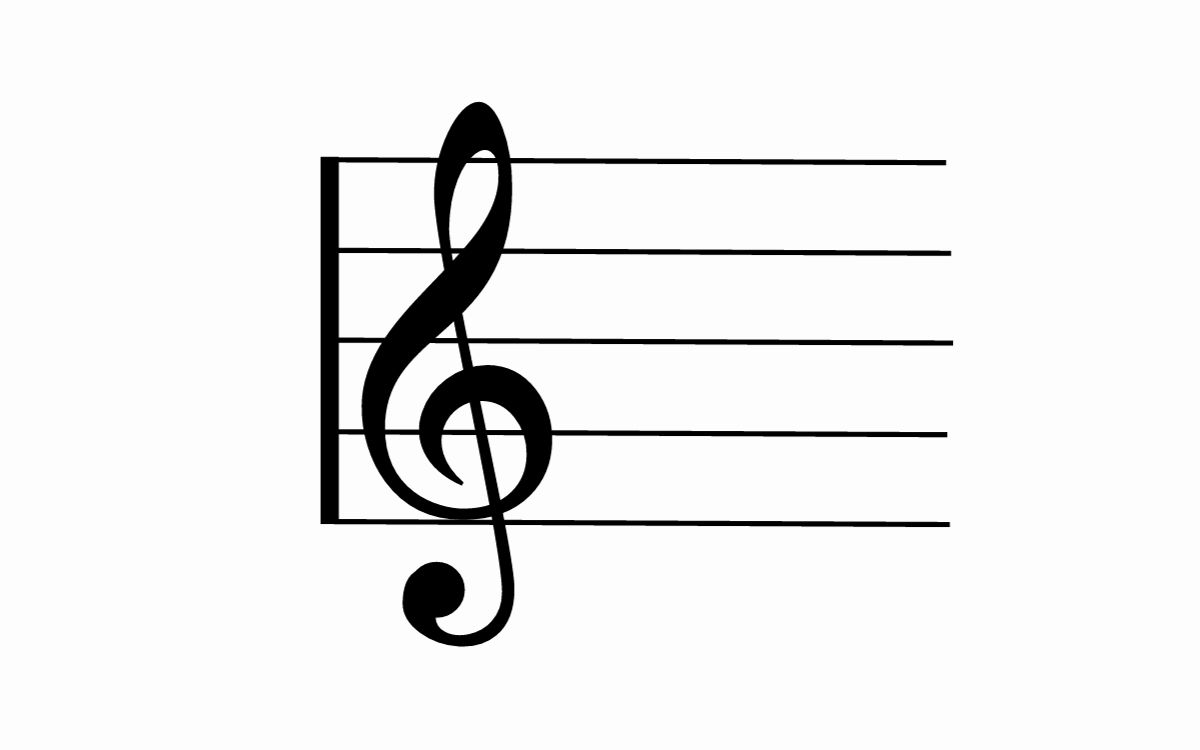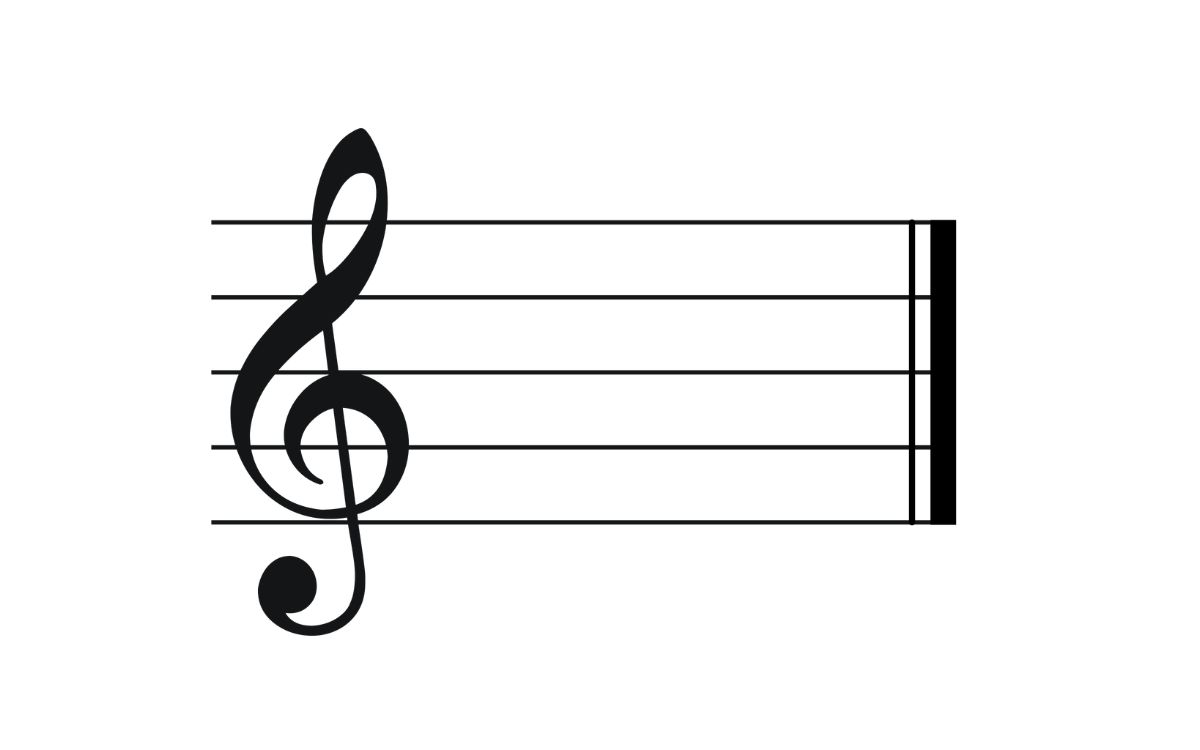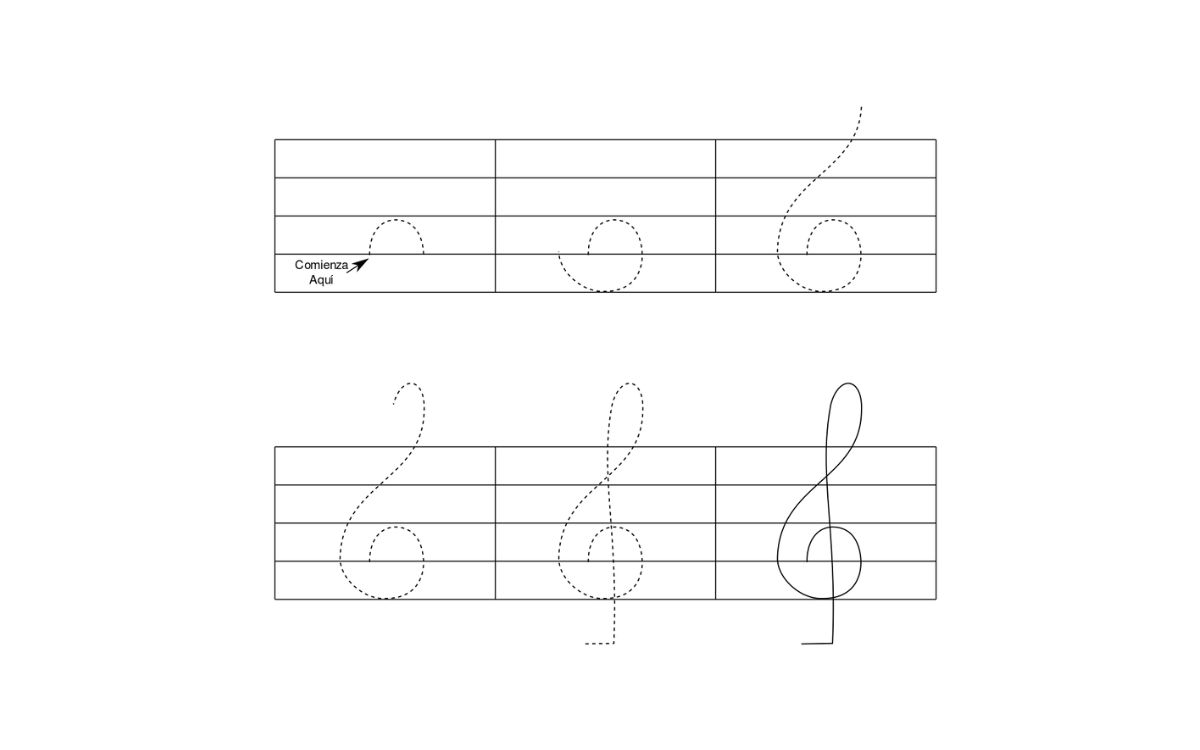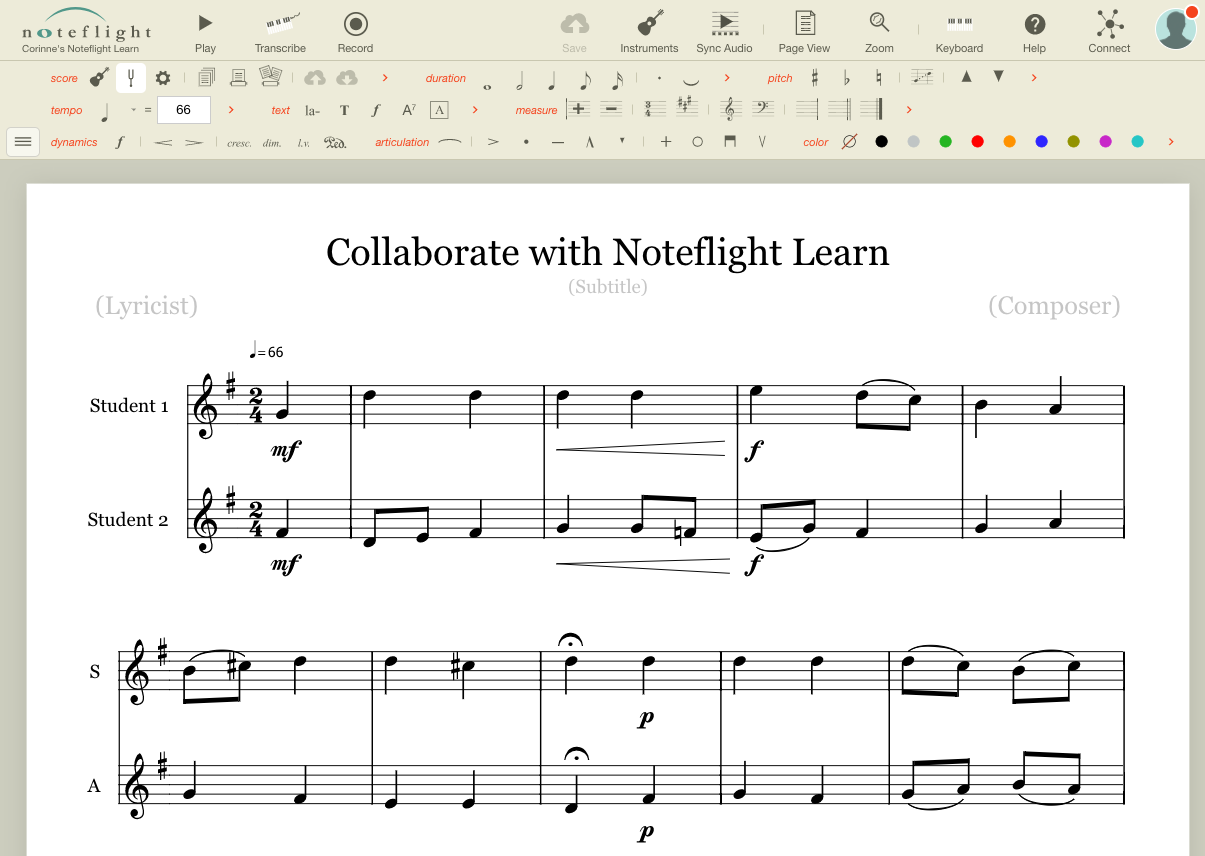Home>Production & Technology>Treble>What Are The Lines Of The Treble Clef?
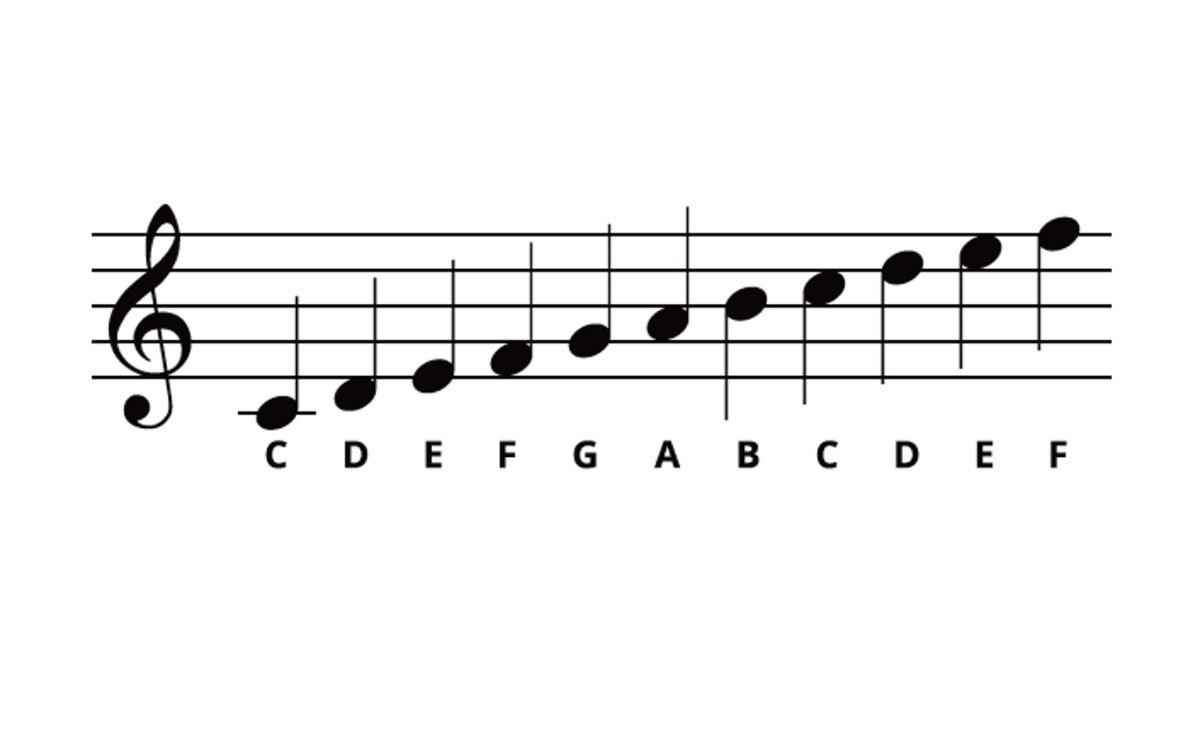

Treble
What Are The Lines Of The Treble Clef?
Modified: January 22, 2024
Learn about the lines of the treble clef, the symbol used in music notation for high-pitched instruments. Explore the significance of the treble clef in musical notation.
(Many of the links in this article redirect to a specific reviewed product. Your purchase of these products through affiliate links helps to generate commission for AudioLover.com, at no extra cost. Learn more)
Table of Contents
html
Introduction
Welcome to the world of music notation! Whether you’re a musician, a music lover, or just getting started on your musical journey, understanding the basics of notation is essential. One of the fundamental elements of music notation is the clef, specifically the treble clef.
In this article, we will explore the lines of the treble clef and learn how they correspond to specific notes. We’ll also delve into the spaces of the treble clef and discover how they are used to notate different pitches. By the end of this article, you’ll have a solid understanding of the treble clef and be well on your way to reading and interpreting music notation.
Before we dive into the specifics of the treble clef, let’s briefly discuss what a clef actually is. In music notation, a clef is a symbol placed at the beginning of a staff to indicate the pitch of the notes that follow. Clefs are integral to reading and playing music accurately, as they establish the reference point for note identification.
Now, let’s focus on the treble clef. The treble clef, also known as the G clef, is one of the most commonly used clefs in Western music. It is easily recognizable by its swirling shape, which consists of a curl that wraps around the second line of the staff, creating a loop that encircles the line.
Traditionally, the treble clef is used to notate higher-pitched instruments like the piano’s right hand, guitar, violin, flute, and many others. It is also commonly used for vocal music, specifically for high-pitched voices or melodies. Mastering the lines and spaces of the treble clef is essential for reading music accurately and playing an instrument or singing in tune.
So, without further ado, let’s delve into the lines of the treble clef and understand how they correlate to specific musical notes.
html
Basics of Music Notation
Before we explore the lines of the treble clef, let’s first establish a basic understanding of music notation. Music notation is a system of writing music using symbols and characters to represent musical sounds and elements.
The staff is a set of horizontal lines and spaces that act as the foundation for music notation. Each line and space on the staff represents a different pitch. The vertical position of a note on the staff indicates its pitch, with higher notes placed higher on the staff and lower notes placed lower.
In addition to the staff, music notation uses various symbols and notations to represent different elements of music, such as rhythm, dynamics, and articulation. These symbols help communicate the composer’s intended expression and performance instructions to the musician.
Notes are the core building blocks of music notation. Each note denotes a specific pitch and duration. The shape of a note symbol indicates its duration, while its position on the staff indicates its pitch.
In traditional Western music notation, there are seven basic notes: A, B, C, D, E, F, and G. These notes repeat in a cycle known as an octave, where the sequence of pitches is repeated at higher or lower frequencies.
Furthermore, notes can be modified by accidentals, such as sharps (#) and flats (b). Accidentals raise or lower the pitch of a note by a half step, increasing or decreasing its frequency.
Understanding the basics of music notation is crucial for interpreting and performing music accurately. With this foundation in place, we can now focus on the specificities of the treble clef and its lines.
html
What is a Clef?
Before we dive into the intricacies of the treble clef, let’s take a moment to understand what a clef actually is. In music notation, a clef is a symbol placed at the beginning of a staff to define the pitch range of the notes on that staff.
Clefs act as a reference point for musicians, helping them identify and interpret the pitches represented by the notes on the staff. Different clefs are used for different instruments and vocal ranges, ensuring that the music is notated in a way that corresponds to the specific pitch capabilities of each instrument or voice.
There are various types of clefs, but the most commonly used clefs in Western music notation are the treble clef (G clef), bass clef (F clef), and the grand staff (combination of both treble and bass clefs).
Each clef has a unique shape and is positioned on a specific line of the staff. The shape of the clef symbol correlates to a specific note, indicating its position on the staff.
When reading music, it’s important to recognize which clef is being used to determine the appropriate pitch for each note. This allows musicians to play or sing the correct pitch and maintain the intended musical expression.
So why is the treble clef specifically called the G clef? The treble clef gets its name from the fact that it symbolizes the note G. The curl of the treble clef wraps around the second line of the staff, which corresponds to the pitch G4, also known as the G above middle C.
Now that we have a basic understanding of clefs and their significance in music notation, let’s delve into the specifics of the treble clef and explore its lines in more detail.
html
What is the Treble Clef?
The treble clef, also known as the G clef, is one of the most commonly used clefs in Western music notation. It is easily recognizable by its curvaceous shape, which curls around the second line of the staff, creating a loop that encircles the line.
The treble clef is primarily used to notate higher-pitched instruments like the piano’s right hand, guitar, violin, flute, and many others. It is also commonly used for vocal music, specifically for high-pitched voices or melodies.
So, why is it called the G clef? The shape of the treble clef symbol specifically correlates to the position of the note G on the staff. The curl of the treble clef encircles the second line of the staff, which represents the pitch G4, also known as the G above middle C.
When reading music in the treble clef, the positions of the notes on the staff correspond to specific pitches. The treble clef indicates that the second line from the bottom of the staff represents the note G, establishing a reference point for note identification.
It’s worth noting that the treble clef is not the only clef that exists. In fact, there are other clefs, such as the bass clef and the grand staff, which combine both the treble and bass clefs. Each clef serves a unique purpose, providing a framework for notating different pitch ranges.
As we continue our exploration, we will focus on the lines of the treble clef and gain a deeper understanding of how they correspond to specific musical notes. By mastering the lines of the treble clef, you’ll be able to confidently read and play music in this clef.
html
The Five Lines of the Treble Clef
Now, let’s delve into the lines of the treble clef and understand how they correspond to specific musical notes. The treble clef consists of five horizontal lines that span the staff, with each line representing a specific pitch. These lines are counted from the bottom to the top.
The bottom line of the treble clef represents the note E, followed by G, B, D, and F on the subsequent lines. To remember the order of these notes, you can use a helpful mnemonic device such as “Every Good Boy Deserves Fudge.”
So, starting from the bottom line, the notes on the lines of the treble clef are:
- E – The bottom line
- G – The second line
- B – The third line
- D – The fourth line
- F – The top line
Remembering the names of the notes on the lines of the treble clef is essential for reading and interpreting the pitch of the music accurately. With practice, identifying these notes will become second nature and enhance your musical understanding.
It’s important to note that the lines of the treble clef only represent the pitches indicated by the positions of the notes. The actual duration of the notes is indicated by the shape of the notes themselves. We’ll explore note durations in a future section.
Now that we’ve covered the lines of the treble clef, let’s move on to the spaces of the treble clef and learn about the notes they represent.
html
The Notes on the Lines of the Treble Clef
Now that we have a grasp on the lines of the treble clef, let’s explore the notes represented by those lines. As mentioned earlier, the lines of the treble clef represent the pitches E, G, B, D, and F.
Starting from the bottom line of the treble clef, the first line represents the note E. Moving up to the second line, we find the note G. Continuing up, the third line represents the note B. The fourth line corresponds to the note D. Finally, the top line of the treble clef represents the note F.
By memorizing these notes, you’ll be able to quickly identify and play the corresponding pitches on instruments or sing melodies using the treble clef as your guide.
It’s important to note that the treble clef only represents the pitches indicated by the lines and spaces, while the actual duration of the notes is designated by their individual note values. Note values, denoted by the shape of the notes, indicate the length of time each note is held or played. Common note values include whole notes, half notes, quarter notes, eighth notes, and so on.
With this knowledge, you will be able to read the notes on the lines of the treble clef and understand their pitch values. As you continue exploring music notation, you will encounter additional symbols and notations that further enhance your understanding and interpretation of the music.
Now that you’re familiar with the notes on the lines of the treble clef, let’s move on to the spaces of the treble clef and discover the notes they represent.
html
The Spaces of the Treble Clef
In addition to the lines of the treble clef, there are also spaces between the lines that represent specific musical notes. These spaces provide an additional level of notation and help define the pitch of the music.
Similar to the lines, the spaces of the treble clef are counted from the bottom to the top. Starting from the bottom space, the notes represented by the spaces of the treble clef are:
- F – The first space above the bottom line
- A – The second space
- C – The third space
- E – The fourth space
Memorizing the notes on the spaces of the treble clef is key to accurately reading and interpreting music in this clef. One popular mnemonic device to remember these notes is “FACE,” which corresponds to the pitches of the notes on the spaces.
Just like the notes on the lines, the notes on the spaces of the treble clef have specific durations indicated by the shape of the notes. Note durations range from whole notes, which are held for a longer duration, to eighth notes, which have a shorter duration.
Understanding the arrangement of the lines and spaces of the treble clef is vital for reading music notation accurately. By combining the knowledge of the lines and spaces, you’ll have a comprehensive understanding of pitch representation in the treble clef.
Now that we’ve covered both the lines and spaces of the treble clef, let’s discuss some techniques for memorizing and confidently identifying the notes on the treble clef.
html
Memorizing the Lines and Spaces of the Treble Clef
Memorizing the lines and spaces of the treble clef is an essential skill for any musician or aspiring music reader. By internalizing the note names associated with each line and space, you’ll be able to quickly identify and play or sing the correct pitches when reading music in the treble clef.
Here are a few techniques that can help you memorize the lines and spaces of the treble clef:
- Use mnemonic devices: Mnemonic devices are popular memory aids that use acronyms or phrases to help you remember information. For example, “Every Good Boy Deserves Fudge” can help you recall the notes of the lines (E, G, B, D, F), and “FACE” can assist in remembering the notes of the spaces.
- Visualize and practice: Visualize the shape of the treble clef in your mind’s eye and mentally go through the notes of the lines and spaces. Then, practice drawing and labeling the notes on a staff, either using paper or a music notation software. The act of physically writing the notes can reinforce your memory of their positions.
- Rote repetition: Practice saying the note names aloud while simultaneously pointing to the corresponding line or space on the staff. Repeat this process regularly until the association between the note names and their positions becomes ingrained in your memory.
- Interactive mobile apps and games: There are numerous mobile apps and online games available that can help you practice identifying notes on the treble clef. These interactive tools provide a fun and engaging way to reinforce your knowledge of the lines and spaces.
- Apply your knowledge: It’s not enough to simply memorize the lines and spaces. To solidify your understanding, practice reading and playing or singing music written in the treble clef. Start with simple melodies and gradually work your way up to more complex pieces as your skills develop.
Remember that memorization takes time and consistent practice. Be patient with yourself and celebrate your progress along the way. With dedication and repeated exposure to the treble clef, you’ll gradually become more comfortable and proficient at reading music notation in this clef.
Now that you have a solid understanding of the lines and spaces of the treble clef and techniques for memorization, you’re well-equipped to embark on your musical journey and explore the vast world of treble clef notation.
html
Conclusion
Congratulations! You have reached the end of our exploration into the lines and spaces of the treble clef. We hope that this article has provided you with a solid foundation and understanding of how to read and interpret music notation in the treble clef.
Remember, the lines and spaces of the treble clef represent specific pitches, allowing musicians to accurately play or sing melodies. By memorizing the note names associated with each line and space, and practicing their identification, you’ll become more proficient in reading music notation in the treble clef.
Additionally, we discussed techniques for memorization, such as using mnemonic devices, visualization, repetition, and interactive tools. Incorporating these strategies into your practice routine will enhance your ability to confidently decipher and perform music written in the treble clef.
As you continue on your musical journey, it’s important to keep in mind that mastering the treble clef and music notation requires time, patience, and consistent practice. Be persistent and embrace every opportunity to engage with the treble clef, whether through playing an instrument, singing, or studying musical scores.
So, keep exploring, keep learning, and most importantly, keep making music. The treble clef is just the beginning of your musical adventure, and with each step forward, you’ll unlock new opportunities to express yourself and share the beauty of music with others.
Best of luck in your musical endeavors, and may the lines and spaces of the treble clef guide you towards harmony, passion, and a lifelong love for making music!

